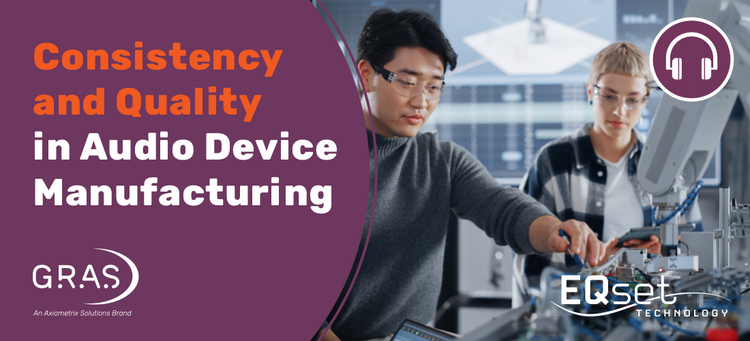Ensure Premium Audio Quality in Global Manufacturing of Audio Devices
Many manufacturers of audio devices contend with the ongoing challenge of production across global factories. Since the global pandemic in 2020, contract manufacturers have increasingly diversified their production lines across multiple regions rather than centralizing them in one location. While this shift enhances operational flexibility, it also introduces unique challenges. Among these challenges, the reliability of production line microphones used for testing audio performance to ensure the quality of final products.
How to Maintain High Audio Standards
Premium audio brands stake their reputations on delivering crystal-clear sound quality to consumers. However, achieving uniformity across multiple manufacturing sites means overcoming several technical obstacles:
· Variability in Testing Environments – Different factory conditions can affect acoustic measurements, leading to inconsistencies in product quality. This can be caused due to differing environmental conditions.
· Inconsistencies in Measurement Microphones – traditional production line microphones used for testing often fail to deliver reliable and repeatable results. Variations in sensitivity and calibration can affect on the accuracy of measurements, making it difficult to ensure consistency across all production lines.
The Importance of the Equipment Used in Quality Assurance
Production line microphones are more than just tools—they’re the backbone of ensuring that audio products meet both global standards and customer-specific requirements. They determine whether an audio product meets stringent quality and performance criteria. However, the reliance on traditional production line microphones often leads to inaccuracies, primarily due to:
· Drift in Sensitivity – Over time, traditional production line microphones may exhibit deviations, resulting in unreliable measurements.
· Environmental Influences – Changes in temperature, humidity, and static pressure can impact the accuracy of test results.
· Inconsistent Calibration Practices – Without precise and repeatable calibration, traditional production line microphones may introduce errors that distort product quality assessments.
Consequently, unreliable measurements may lead to faulty products reaching customers, weakening the trust between audio brands and contract manufacturers. This loss of confidence can damage brand reputation and ultimately result in significant business setbacks.
A Future-Proof Approach to Premium Audio Devices Manufacturing
As the demand for high-fidelity sound continues to rise, audio manufacturers cannot afford to compromise on quality assurance. In a competitive audio market, standing out means
delivering exceptional testing quality that premium audio brands can rely on. Ensuring product consistency and meeting both global industry standards and customer-specific requirements are no longer optional—they are essential to maintaining trust and staying ahead.
To achieve these goals, manufacturers must adopt solutions that prioritize precision, reliability, and efficiency. The right testing equipment should not only simplify workflows but also reduce downtime, improve accuracy, and provide long-term scalability to meet evolving demands without impacting the budgets assigned.
Explore the unique GRAS EQset microphone technology
EQset technology offers a smarter way to enhance your testing processes, making it easier to maintain high standards without the hassle of frequent recalibrations. With a design that seamlessly integrates into production workflows, it opens up new possibilities for efficiency and precision.
Curious to learn more? Discover how this technology can redefine your approach to audio testing in production line
You may also be interested in:
The Main Challenges in Production Line Testing of Audio Devices









